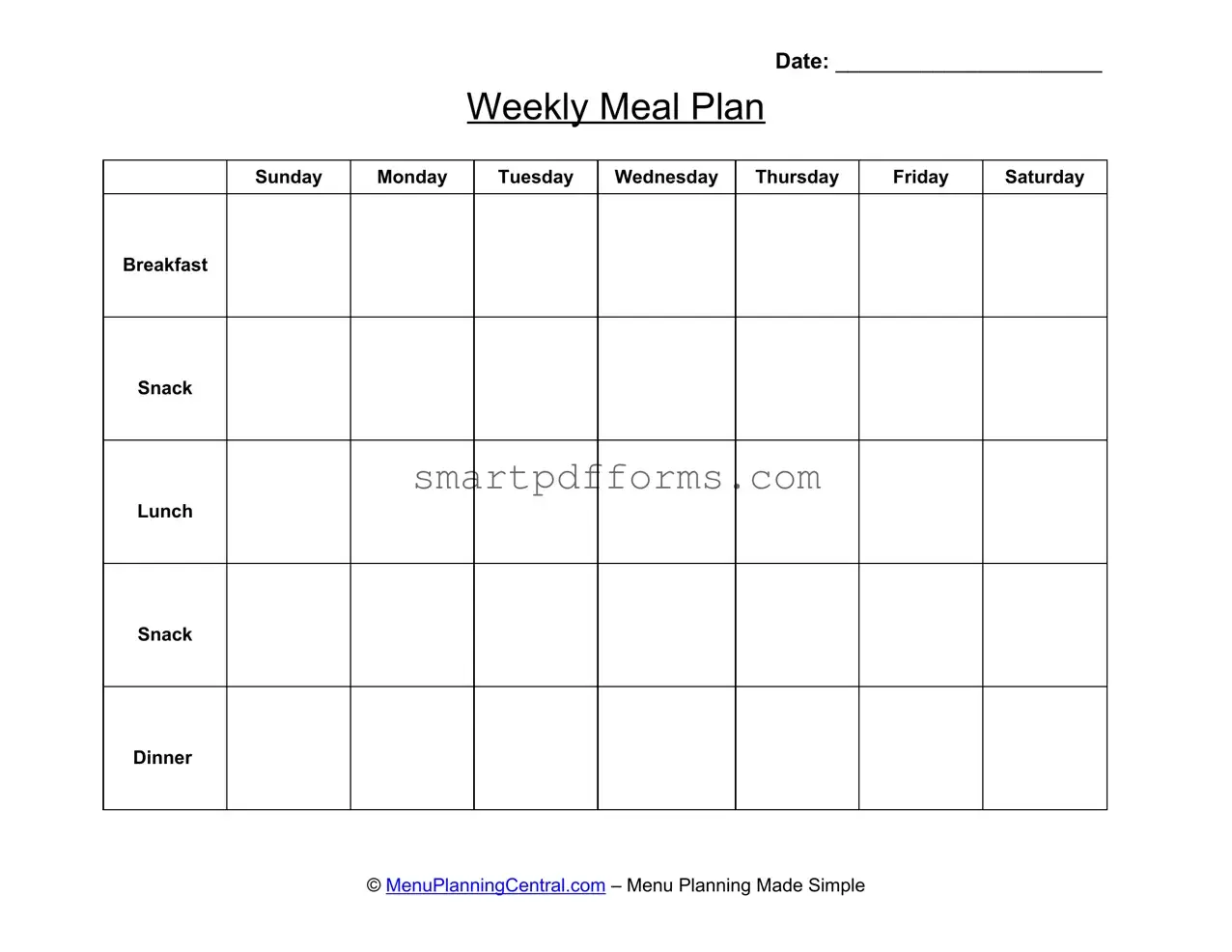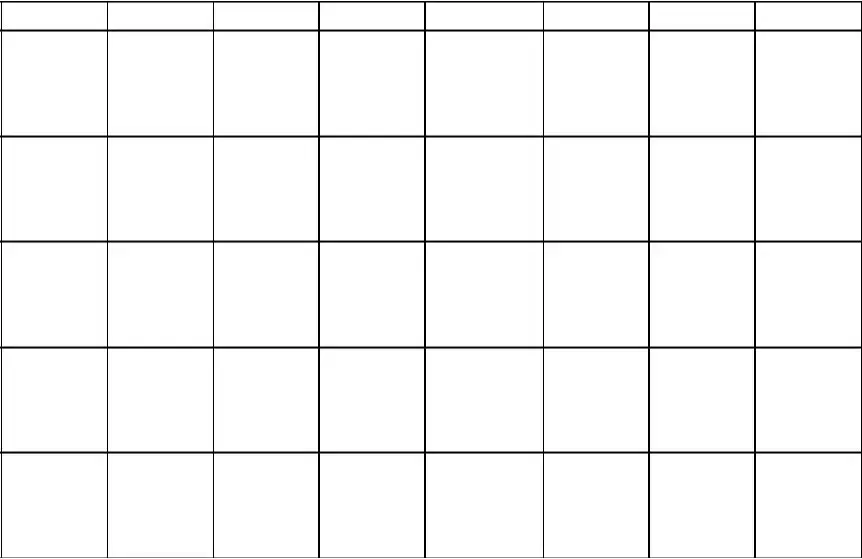Blank Menu Planner PDF Template
A Menu Planner form is a tool designed to assist individuals in organizing their weekly meal plans, ensuring a cohesive and balanced approach to eating. By setting out specific meals for breakfast, lunch, dinner, and snacks from Sunday to Saturday, it simplifies grocery shopping, saves time, and aids in healthy eating habits. To make meal planning easier, fill out the form by clicking the button below.
Make This Document Now

